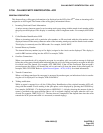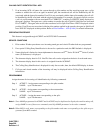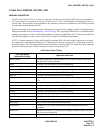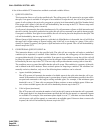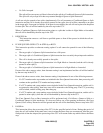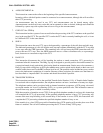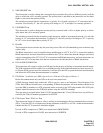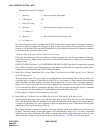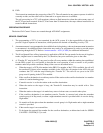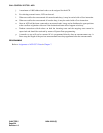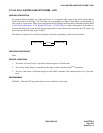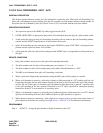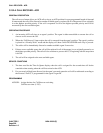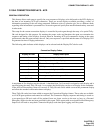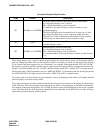
NDA-24282 (E) CHAPTER 5
Page 233
Revision 1.0
CALL CONTROL VECTOR - ACD
19. END
This instruction terminates the processing of the CCV. The call remains in any queue or queues in which it
currently resides, and the caller will be connected to an agent when one is available.
The call processing in a CCV will terminate, without an End instruction, when the entire twenty steps of
the CCV have been executed. If the CCV has fewer than 20 instructions, the steps without instructions are
treated as Blank instructions.
OPERATING PROCEDURE
The desired Call Control Vectors are created through ACD MAT assignments.
SERVICE CONDITIONS
1. The programming of CCVs is not examined by the ACD system. It is the responsibility of the user to
provide a logical sequence of instructions, which produces the desired call handling, in every CCV.
2. An announcement is not guaranteed to be available from its beginning, when an Announcement instruction
is encountered. An additional Pause instruction may need to be programmed in order to provide proper
sequencing through the CCV. Refer to Announcements - ACD [A-80A] for additional information.
3. The If not Queued Goto or Busy instruction is applicable to DID & Tie type trunks. In the case of ringdown
trunks, ringback tone is controlled by the C.O.; therefore, busy tone cannot be given to the caller.
4. A “Transfer To” step in the CCV may send a caller off to any number within the number plan established
for the PBX system. It is not feasible to describe the exact operation of such a transfer to all possible
numbers under all possible conditions. Many of the cases are described below.
a. When the target is a UCD pilot number in the PBX: If a member of the UCD is available, the call will
be transferred. If there are no members available in the UCD, the call remains in the ACD side and
continues the CCV with the step following the “Transfer To”. The call will not queue to the UCD
group even if queuing in the UCD is enabled.
b. If the overflow destination is an ordinary station: If the station at the overflow destination is a member
station of a station hunting group:
c. If transfer service is set for the station at the overflow destination:
d. When the station at the target is busy, the Transfer-To instruction may be retried with a Goto
instruction.
e. When the station at the target is in make-busy state or lockout state, no transfer takes place.
f. If the overflow destination is an attendant console: Transfer is executed only when the attendant
console group is in Day mode, or when a night attendant console is provided and is in service during
Night mode.
g. No transfer will take place when the attendant console group is in Night mode and no night attendant
console is provided.
h. If the transfer target is an external line:
i. To designate the external line number for the overflow destination, an abbreviated code for SPEED
CALLING - SYSTEM [S-3] is used.



